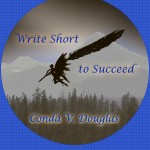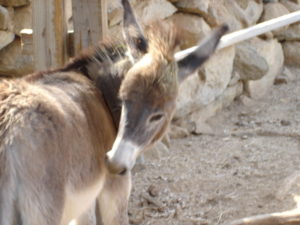Today I welcome Idaho writer Conda V. Douglas. Conda’s had more than 100 short stories published and has written a great book on writing short stories, Write Short to Succeed. Recently she mentioned to me how many stories lack real conflict, so I asked her to share her thoughts here. Welcome, Conda. And congratulations on The Mall Fairies: War winning the Epic eBook Award 2016 for children’s/young readers!
Now to the conflict.
 Conflict: that most necessary element of writing anything and yet sometimes the most difficult for authors to grasp. Conflict: often the easiest way to construct a story and yet sometimes the most difficult for authors to use. Conflict: a tool that every author needs to know how to use.
Conflict: that most necessary element of writing anything and yet sometimes the most difficult for authors to grasp. Conflict: often the easiest way to construct a story and yet sometimes the most difficult for authors to use. Conflict: a tool that every author needs to know how to use.
One way to learn what conflict is and isn’t is to deconstruct a story or article. For this post, I’m using common romance. Why? Because romances are one type of story that it’s easy to confuse the different elements, conflict with plot, for example.
Most romances are “Girl gets boy, girl loses boy, girl gets boy back.” This is not conflict. This is the plot. The conflict is inherent in the plot. Where is it?
Three questions can lead to finding the conflict:
“What’s the problem?”
“What’s the goal of the main character?”
“Are the stakes high?”
The problem is: Girl loses boy and wants boy back. This is the conflict. She wants what she doesn’t have. The conflict always raises questions. Will the girl be able to get the boy back? How? What will she do to accomplish that?
Her goal is to get the boy back. What she does to accomplish that is the action of the story. When the goal is thwarted—what the girl tries doesn’t work, that leads to more conflict. Now what will she do? Will that work?
The stakes are high because she’s lost the love of her life. It will be terrible if she can’t get him back. The higher the stakes the more conflict there is.
This is why writing coaches always advise to make it as hard as possible on your characters. The more problems, the higher the stakes, the bigger the goals and the harder to achieve those goals, the more conflict there is.
Conflicting questions? Conflicting answers? Let me know in the comments!
Here’s a little more about Conda V. Douglas:
 Conda glories in writing both short and long, always with oodles of conflict. She credits winning the Epic eBook 2016 award in children’s/Young Reader for her title The Mall Fairies: War to using conflict! (And no, it’s not the war that’s the conflict, that’s the action.) Her latest book, Write Short to Succeed, in which she devotes an entire chapter to the vagaries of conflict, is out now. On May 3, 2016, Conda will teach a class in Hows and Whys of Writing Short for Boise Schools Community Education, more details here.
Conda glories in writing both short and long, always with oodles of conflict. She credits winning the Epic eBook 2016 award in children’s/Young Reader for her title The Mall Fairies: War to using conflict! (And no, it’s not the war that’s the conflict, that’s the action.) Her latest book, Write Short to Succeed, in which she devotes an entire chapter to the vagaries of conflict, is out now. On May 3, 2016, Conda will teach a class in Hows and Whys of Writing Short for Boise Schools Community Education, more details here.

Thanks so much for having me on your fabulous blog, Kathy! There’s no conflict here!
Glad you could join us.
Kathy and Conda,
First, Conda, congrats on the award for your middle grades novel.
Well-deserved! Second, you provide excellent advice. Conflict is essential in a good plot.
Thanks, Jacqueline! And yes, the more conflict the better, IMO!